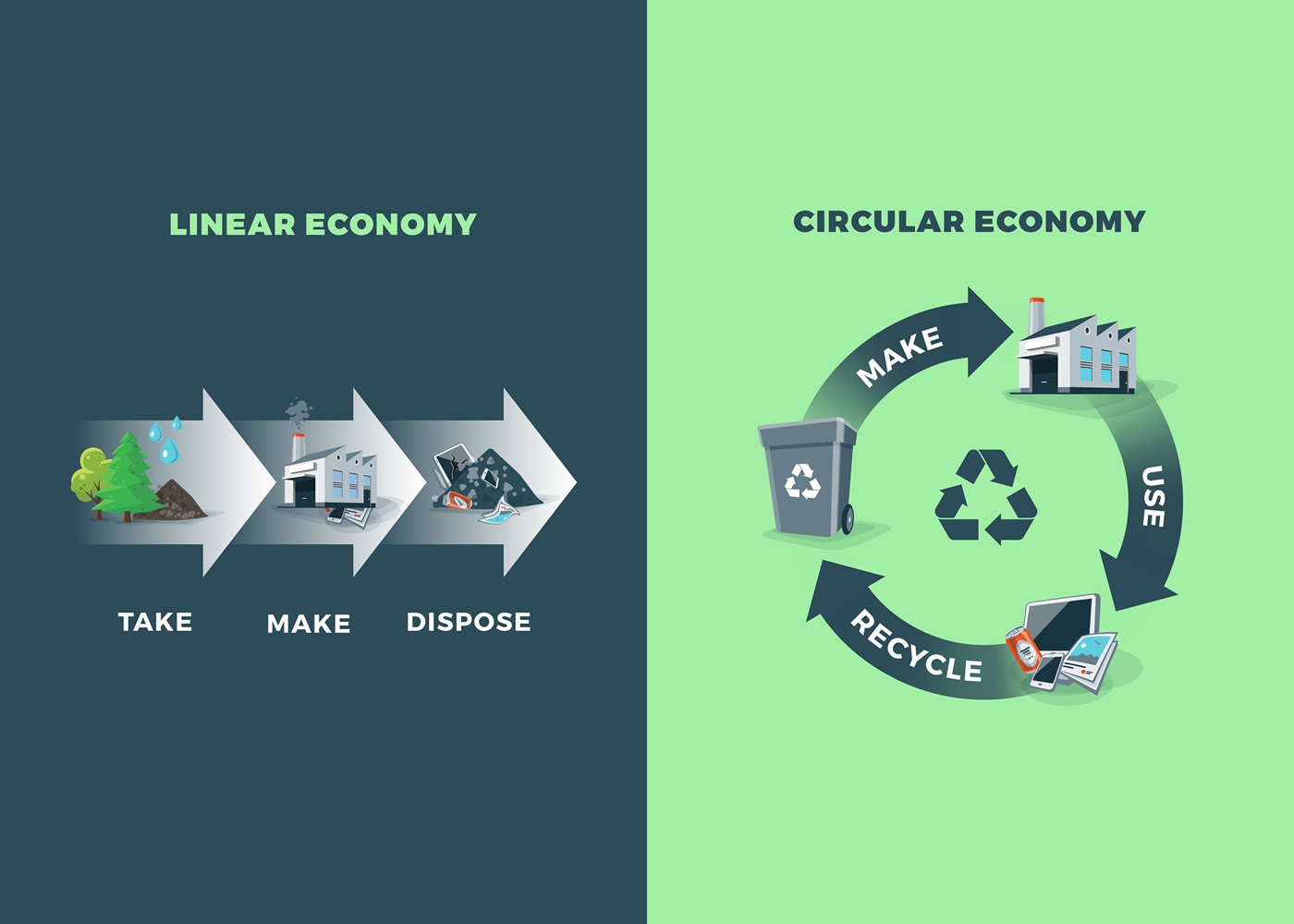William McDonough Shares His Plans for the Next Industrial Revolution

GT: Can you kick us off by explaining what the circular economy is and how it works?
WM: The history of the first industrial revolution could be seen as simply a take-make-waste linear model. The circular economy, on the other hand, is a very ancient idea (as well as a very modern idea), which is to take, make, reuse, redesign, reuse, make, and so on. It reminds me of my grandparents and with what we saw during the Second World War, where metals were protected, people composted, had gardens and kept everything as local as possible. The circular economy is one where we put materials and energy and water into endless reuse, and some cases we close loops in situations where a direct return may be appropriate.
GT: What is the difference between the circular economy and sustainability?
WM: The circular economy is not sustainability, it is the economy. We also have society and the environment to consider in sustainability. But as far as the economy is concerned, instead of a downward spiral descending with materials that are degrading or being lost to utility, it is actually what I call a spiral economy rising up, with clean energy, clean water, clean materials, designed for endless resourcefulness for all the children of all the species for all the time that is what we call cradle to cradle, which is the underlying momentum of the circular economy.
GT: How does the "cradle-to -cradle" concept change how you approach the design process?
WM: I am going to give you an example. Wal-Mart has hired me to redesign the cereal box. What does that mean for design? Let's start with an inventory of what we are dealing with. The current cereal box is made from paper board that comes from magazines, for example, that may contain what we call contaminants, from mineral oil-based inks. Then I have a dense plastic bag.
In cradling to cradling, we see the world biologically with technical nutrients in a circular economy. We do that because materials that we use are going to be in the biosphere, and we want them safe and healthy for our biology.
When we redesign a cereal box, we would say, I don't want contaminated paper, I don't want plastic technical nutrients inside a biological nutrient box, because when this gets to the dump (we call them material recovery facilities), the scanners don't know when they see the cereal box go by if it has a plastic bag inside. It might, therefore, be seen as paper, so the plastic gets recycled in the bales with paper, contaminating the paper.
Redesigning the cereal box involves new polymers and even new papers. What we find is if we do this, the regulators love it because there is nothing to regulate. It is healthy, safe, things in a circular economy and the real issues become the business questions of 'Can I do it affordably and go to scale?'
GT: How far away are we from seeing these ideas incorporated into everyday business practices?
WM: I just came back from China, where I met with the head of Circular Economy for China. We are working together to develop protocols for the next five-year plan. I think we will see a push coming from China because they need to do things this way for their environment as well as their economy. They know they are going to run out of stuff and they know they want to put them in circles. The next twelve year plan of China is called the circular economy - that's the name of it. It's very exciting.
GT: For those who are sitting in the audience, how can they start to incorporate your concepts into how their company thinks about its products or processes?
WM: Engineers tend to focus on metrics and measurements, which is embodied by their motto: 'In God we trust; all others bring data,' If you only focus on metrics, though, you get the goals, but you can't get to your values. As architects and designers our job is to not be analytical but to be synthetic, to put things together and create new things, so we start with our values. How do you love all the children of all the species for all the time? We then move to principles, then move to eliminate the concept of waste, then go to goals and then we go to strategies and tactics, and then we measure. We are sympathetic with each other except that one starts with metrics and the other starts with values and we work to these goals together.
Peter Drucker made a very important point in his book, 'The Effective Executive'. The manager's job, he said, is to be efficient and do something the right way. It is the executive's job, however, to be effective and do the right thing. If you are a manager and you you've introduced a product the market doesn't need or contains something poisonous, and you are doing it efficiently, you are perfectly wrong. At that point so the real question becomes, 'What is the right thing to do? For all your audience that should all be our first question. 'What is the right thing to do? And what is the right way to go about it?'
Related
Sponsored Content
About the Author
NAEM Staff
The National Association for Environmental, Health and Safety, and Sustainability (EHS&S) Management (NAEM) empowers corporate leaders to advance environmental stewardship, create safe and healthy workplaces and promote global sustainability. As the leading business community for EHS&S decision-makers, we provide engaging forums, a curated network, peer benchmarking, research insights and tools for solving today’s corporate EHS&S management challenges. Visit us online at naem.org.
